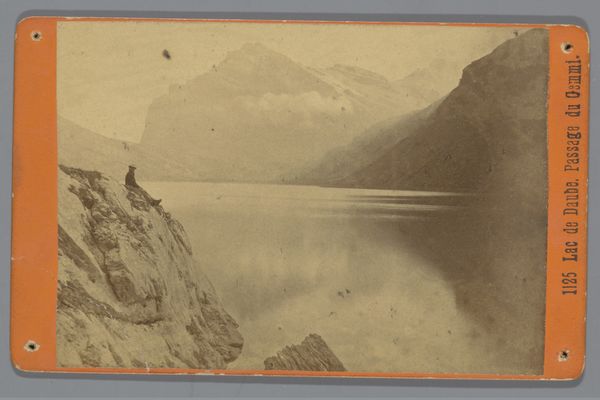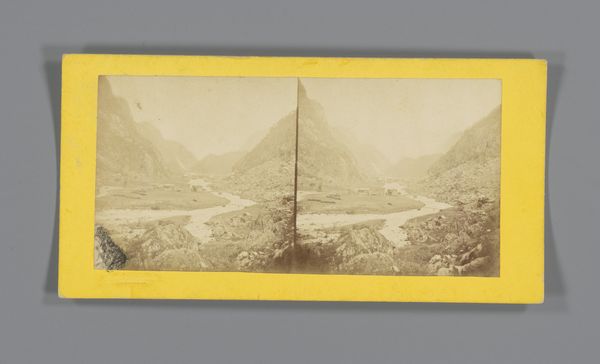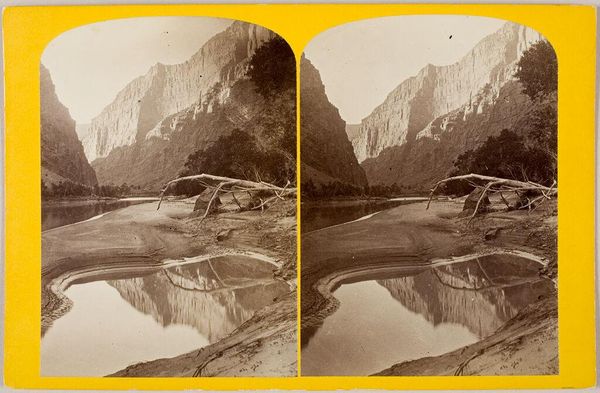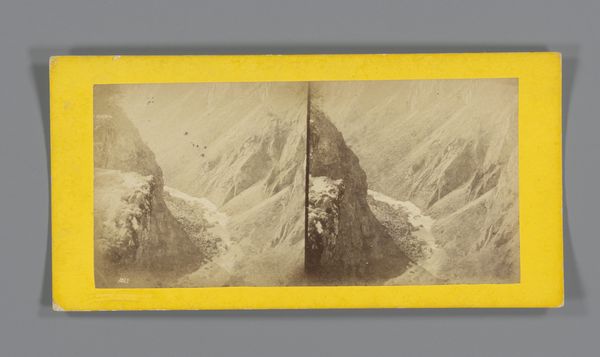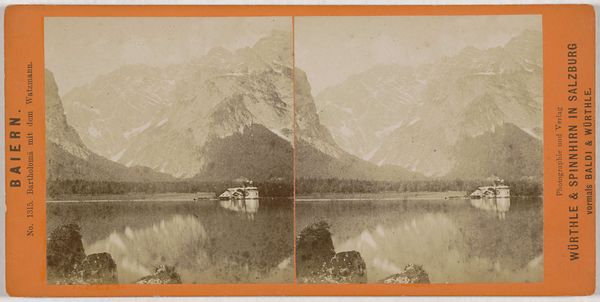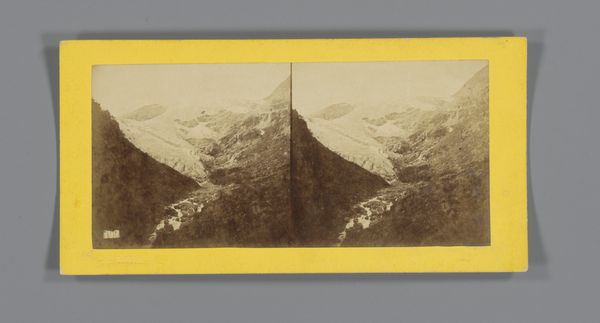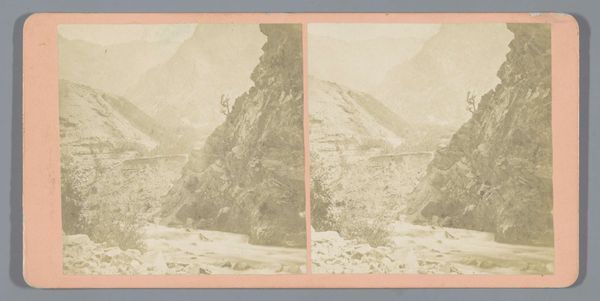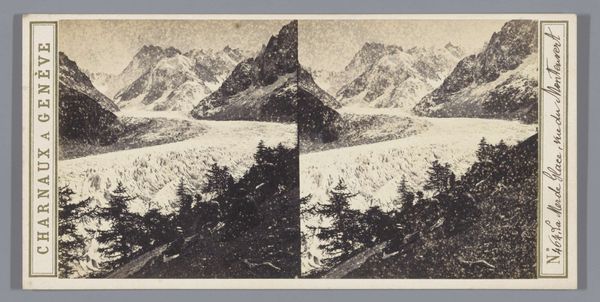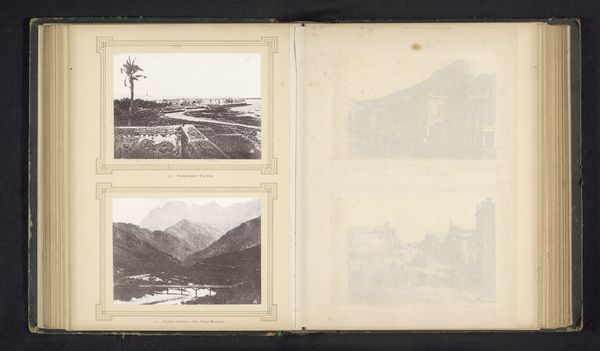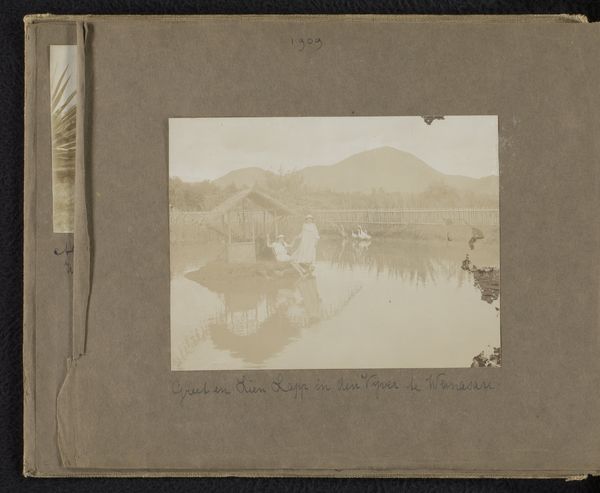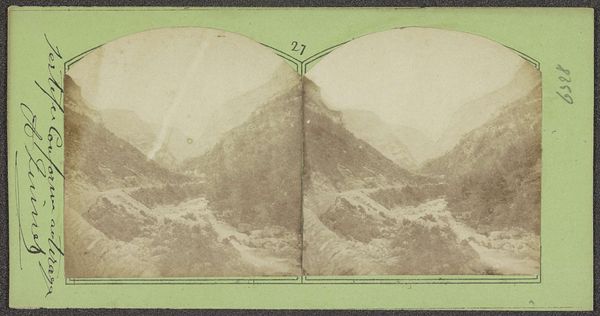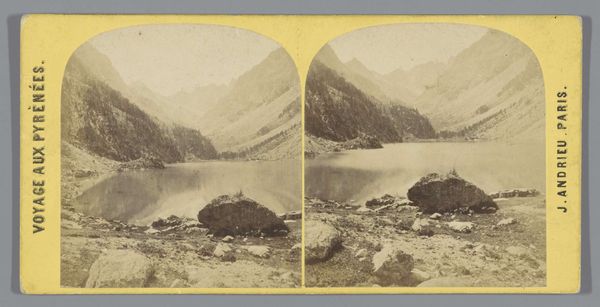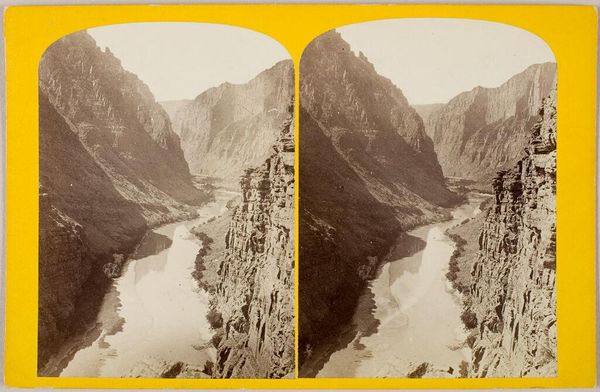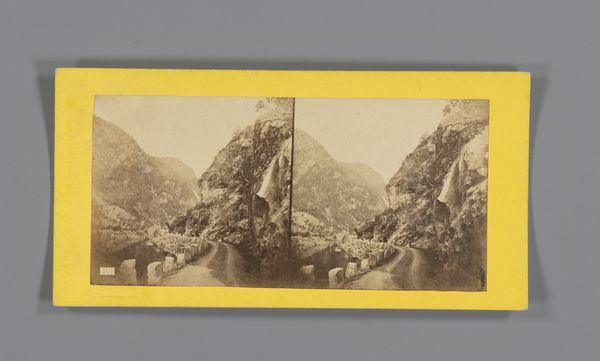
photography, gelatin-silver-print
#
pictorialism
#
landscape
#
photography
#
gelatin-silver-print
Dimensions: height 77 mm, width 159 mm, height 88 mm, width 178 mm
Copyright: Rijks Museum: Open Domain
Curator: Welcome. We're standing before an early 20th-century photograph titled "Appenzell, Zwitserland," a gelatin silver print capturing a landscape in Switzerland, believed to be from around 1905. It's a fine example of pictorialism, characterized by its soft focus and painterly aesthetic. Editor: My first impression is one of profound tranquility, but there's also an undeniable melancholic air about it. The muted tones and stillness give it a timeless quality, yet the foreground suggests a disruption, almost as if to signify the transient nature of everything. Curator: Yes, that tranquility was meticulously crafted. Pictorialist photographers like the anonymous creator of this work saw themselves as artists, carefully composing scenes and manipulating the developing process to achieve particular aesthetic effects. This piece presents a staged idyllic vision of Swiss life for consumption within a Western paradigm. Editor: It also feels deliberate in how it presents the natural landscape as unspoiled and untamed, possibly in direct contrast to the industrial progress that was taking place in Europe at that time. Does it perhaps romanticize nature and conceal the existing realities of land use, indigenous life, or environmental degradation? Curator: Exactly. Photographs like this circulated widely, shaping perceptions of places and contributing to developing narratives of national identity. It provided, in this instance, an idyllic narrative of Switzerland's landscape and potentially a means to distance itself from rapid industrial advancement, something of particular relevance within the wider context of early 20th century European politics. Editor: It's interesting how such seemingly serene images can hold such layered implications. This photograph certainly highlights the powerful role art can play in both constructing and reflecting on socio-political issues. What began as an appreciation of nature transitions into a lesson on the influence of photography in shaping our understanding of it. Curator: Precisely. It pushes us to consider whose perspectives are prioritized, and who is possibly omitted from such a selective portrayal of time and place. Editor: Food for thought indeed. Thank you for sharing that perspective. Curator: My pleasure.
Comments
No comments
Be the first to comment and join the conversation on the ultimate creative platform.
